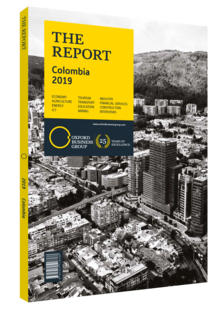María Fernanda Suárez, Minister of Mines and Energy: Interview

Interview: María Fernanda Suárez
What specific measures are necessary to develop Colombia’s hydrocarbons reserves?
MARÍA FERNANDA SUÁREZ: Regarding hydrocarbons, we want to invigorate the industry to ensure we maintain self-sufficient energy production. This is under threat because we currently have only 5.7 and 11.7 years of oil and gas reserves, respectively. Projections show that if the country does not find new sources by 2021-23, importing gas may be necessary to respond to rising household demand. In this context, we are emphasising four key actions: reactivating exploratory endeavours in the continental shelf; promoting contractual conditions to initiate the next phase of exploration in off-shore projects; weighing our alternatives in non-conventional deposits; and incentivising a recovery factor increase in our existing fields. The government’s aim has been to promote an objective discussion at the national and regional levels regarding technical, environmental, social and economic aspects to determine the future of these resources and their implications towards our development. The national government has put together an independent, multidisciplinary commission to analyse and formulate recommendations on the exploration phase of non-conventional hydrocarbons deposits. The commission has released its conclusions and recommended the development of comprehensive exploration pilot projects under certain conditions.
How do you foresee the energy mix evolving?
SUÁREZ: At present, close to 65% of the energy produced comes from hydroelectricity. This makes our energy mix the sixth cleanest in the world, according to the World Energy Council. However, we are also among the 20 countries most vulnerable to climate change, meaning we need to diversify to become more resilient. Our objective is to have an energy sector that is reliable, sustainable and efficient. Ensuring that new sources of clean energy generation have enough opportunity to develop is fundamental to achieving these objectives. One key development reflecting these objectives was a recent energy auction to ensure coverage of demand up to 2022-23. We assigned obligations for close to 1400 MW of energy to non-conventional renewable energy projects, including solar and wind, under moments of uncertainty or shortage. This indicates that we are continuing to diversify, complement and improve the competitiveness of our energy matrix. The allocation for these projects represented 6% of the auction’s total, meaning that for the first time Colombia will have solar and wind energy in its mix. Our country is capable of becoming a regional renewable energy powerhouse. In La Guajira, for example, wind speeds are double the global average, and in many regions solar intensity is among the world’s highest. The president has also placed the target of incorporating at least 1500 MW of alternative energy by 2022. We are close to reaching this, and are developing the mechanisms necessary to allow for their efficient and sustainable access.
What factors are ensuring that resources are being allocated equally across the country?
SUÁREZ: The recent Constitutional Court ruling determined that subsoil resources belong to the nation, and any projects concerning their exploitation need to be submitted through a coordination and participation mechanism with territorial development entities. Additionally, we are committed to improving the earnings of productive areas. In 2011 we had a change in the royalty distribution regime, lowering producing regions’ share of royalties from 80% to 20%. Moreover, the 2014 drop in commodities prices exacerbated the reduction in the amount of royalties perceived by the producing regions, changing the relations with communities. To seek a new equilibrium, we presented a bill to increase the direct assignation to the producing regions to between 30-50%. Through this new distribution, we expect to incentivise a favourable environment for the exploration and production of hydrocarbons resources.
You have reached the limit of premium articles you can view for free.
Choose from the options below to purchase print or digital editions of our Reports. You can also purchase a website subscription giving you unlimited access to all of our Reports online for 12 months.
If you have already purchased this Report or have a website subscription, please login to continue.

